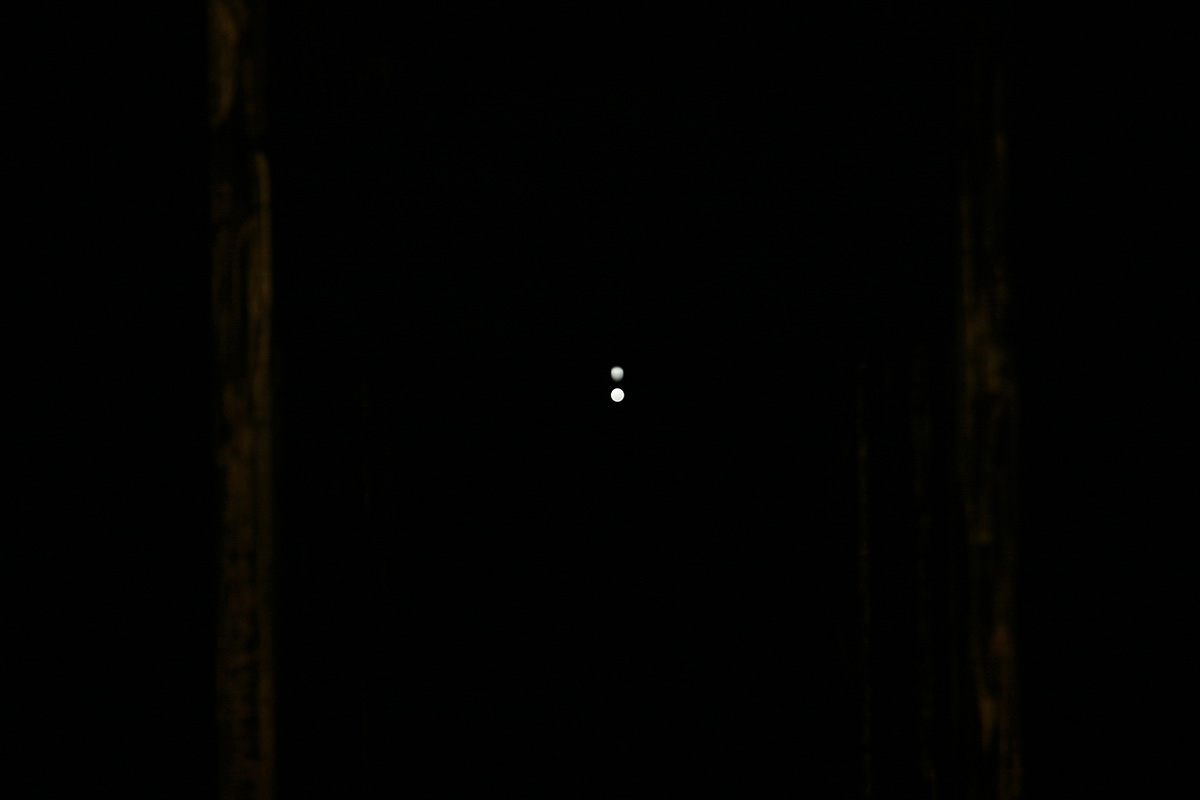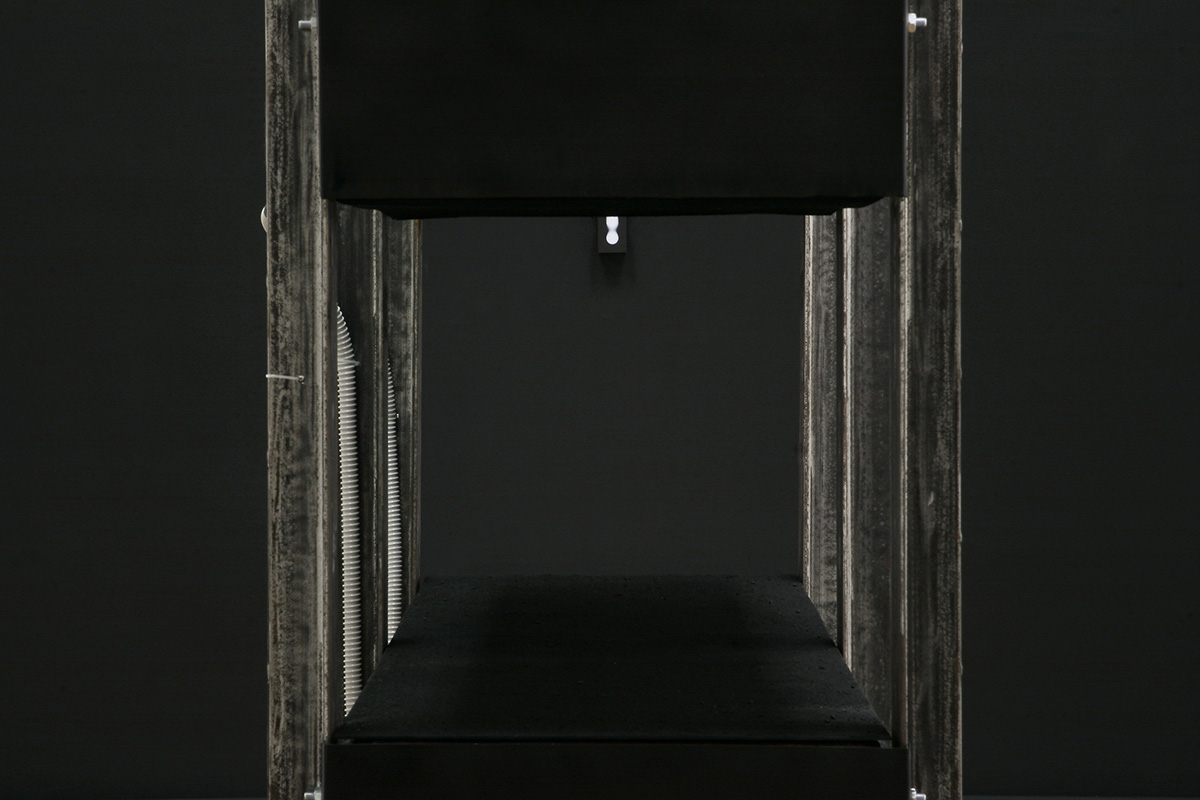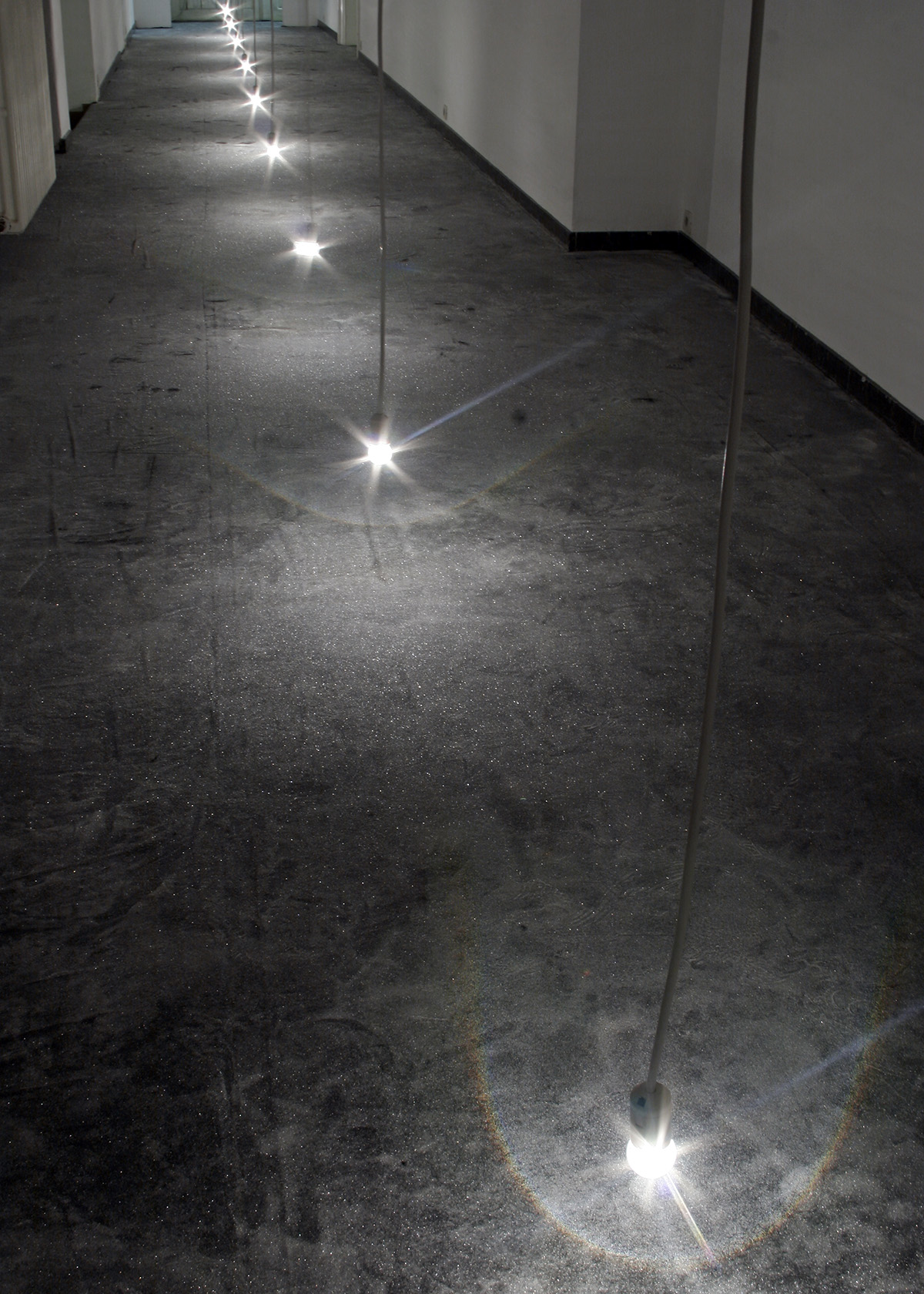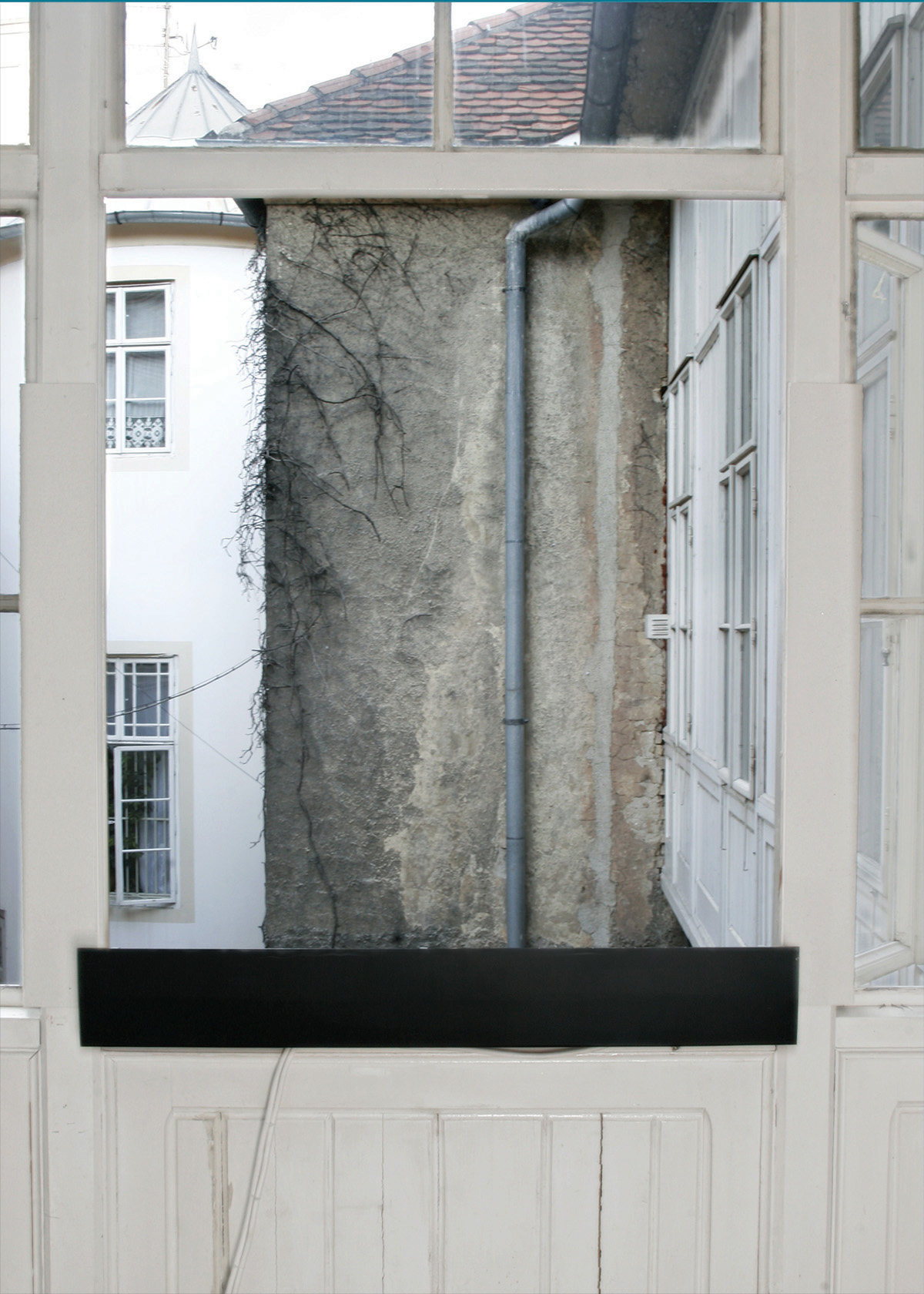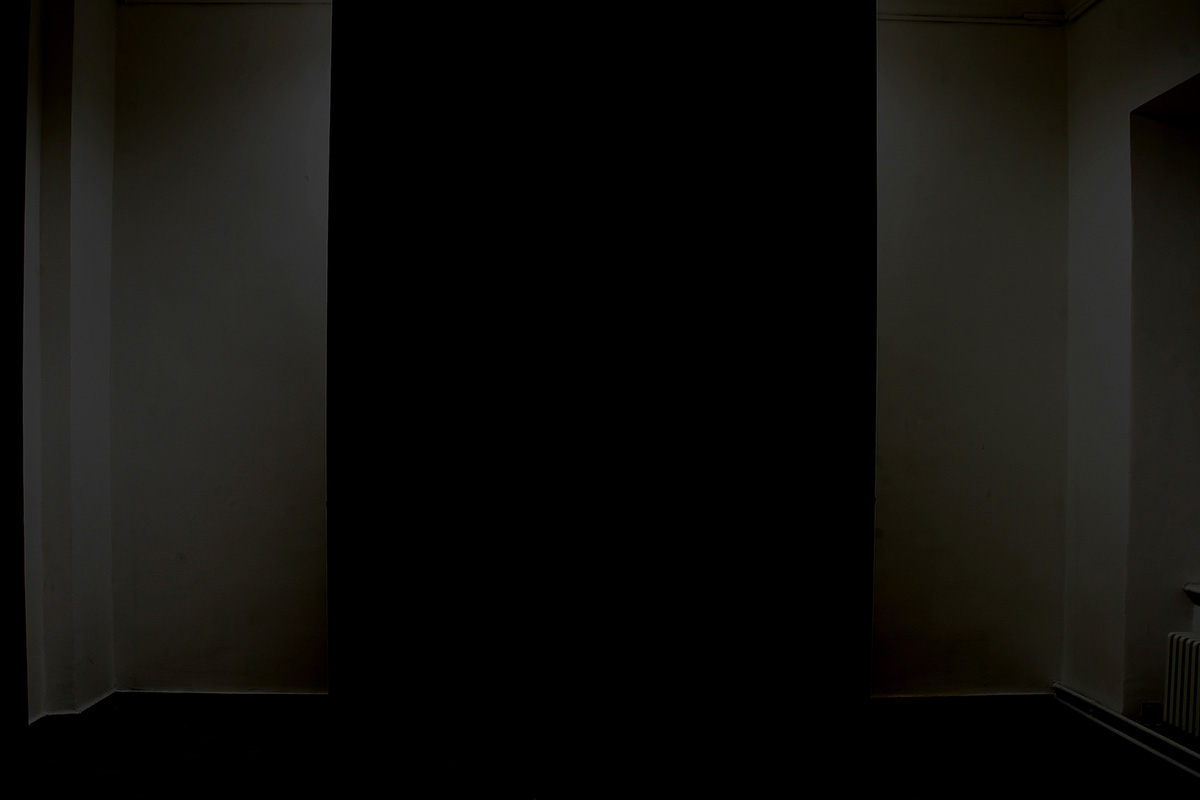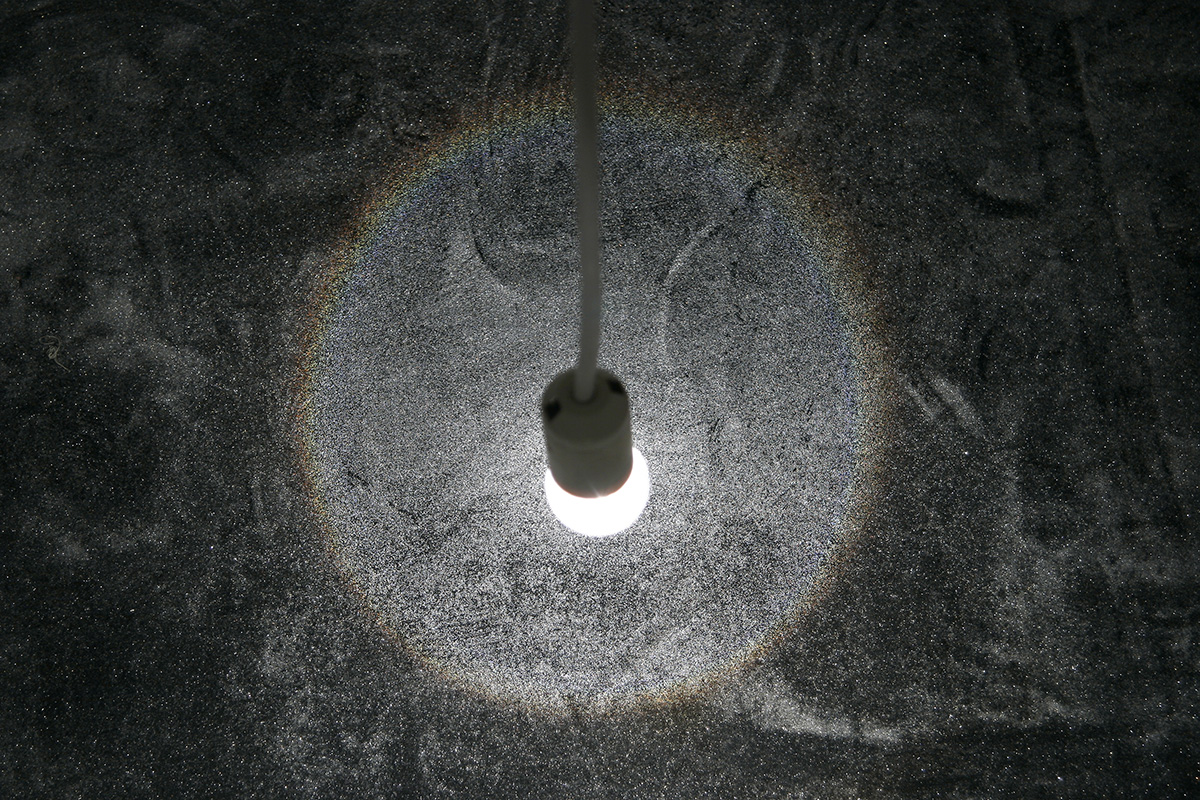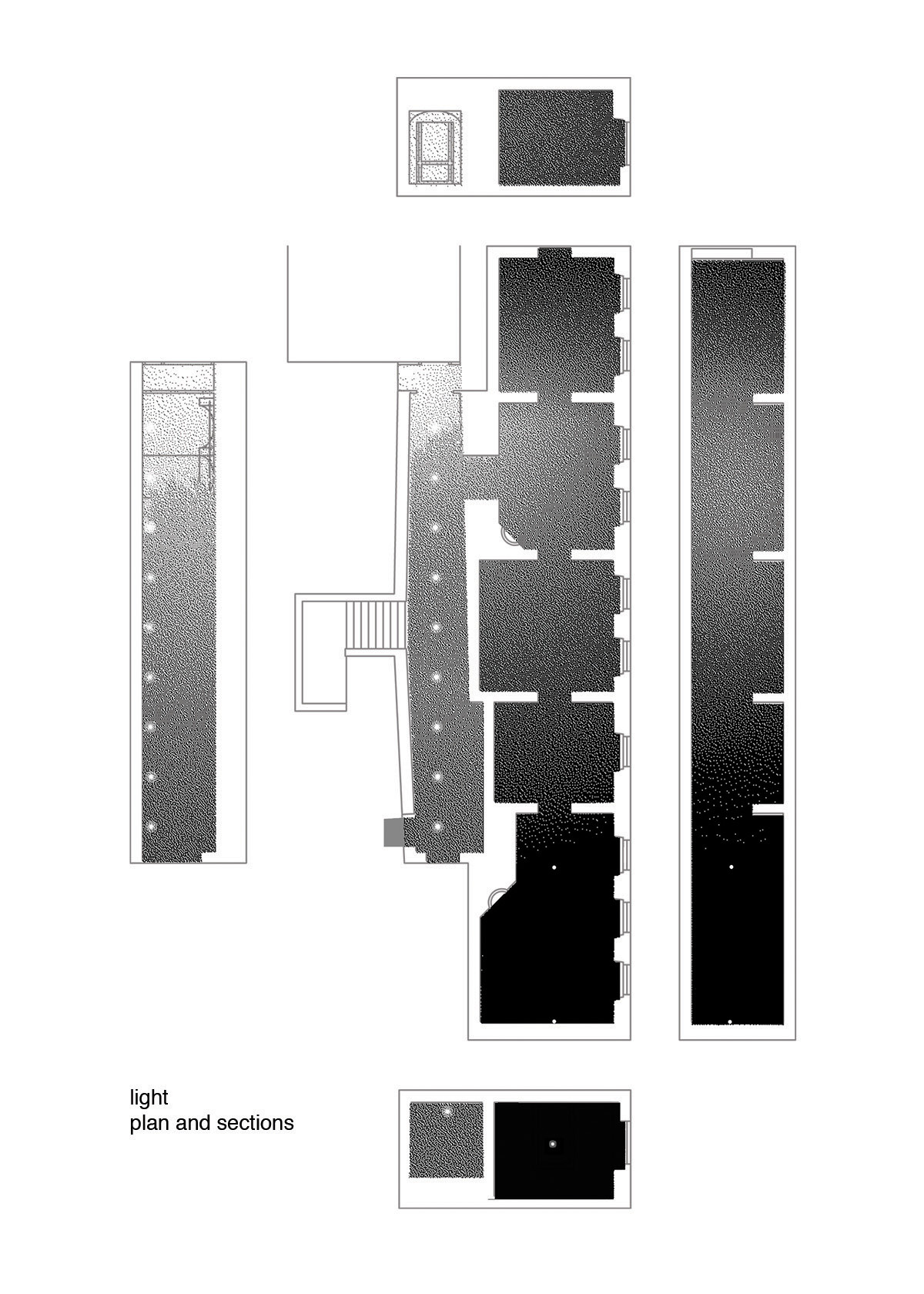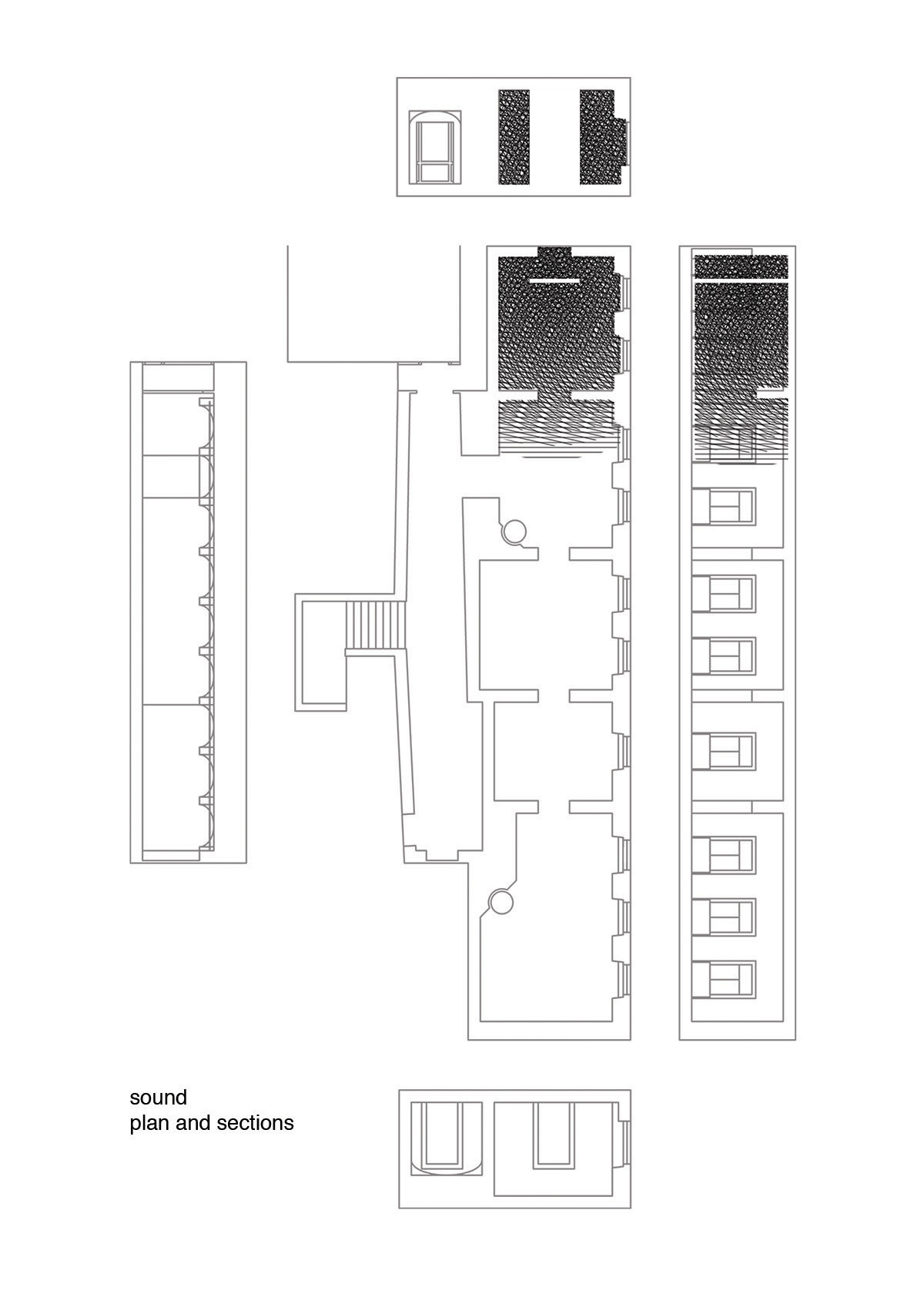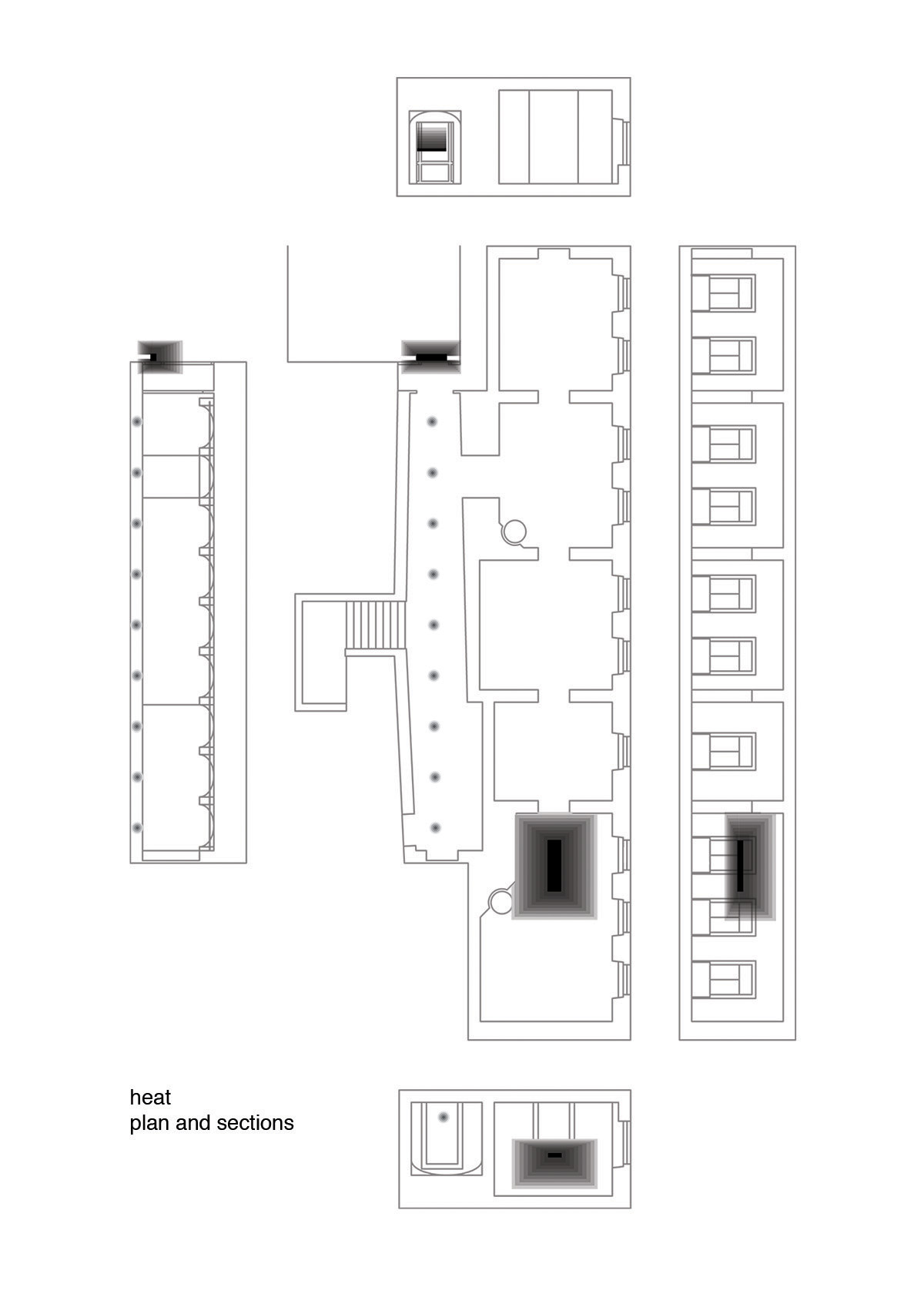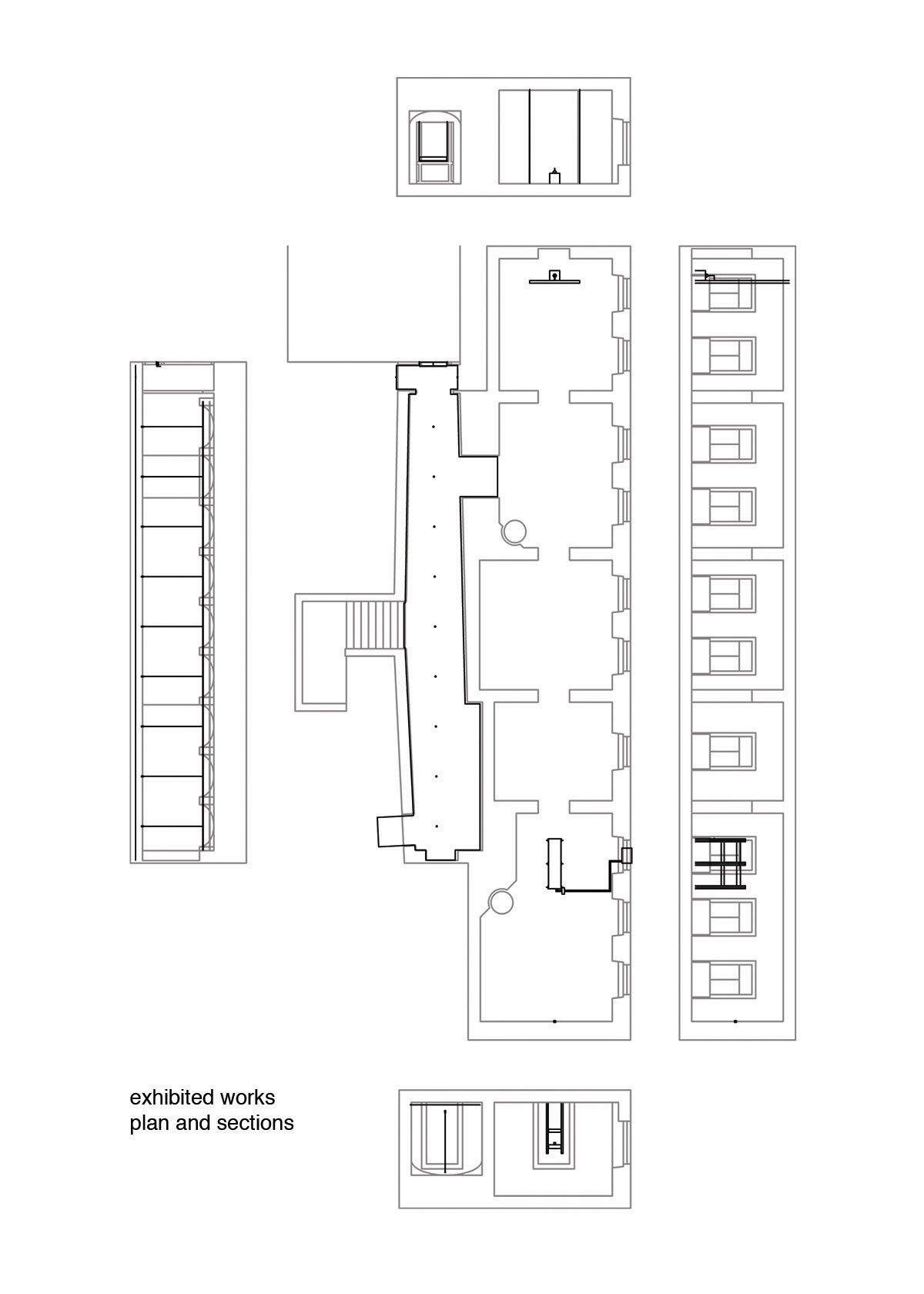Avoid / Izbjegavanje
Museum of Contemporary Art Zagreb, June 2 – June 26, 2005.
in collaboration with S.Vujičić and D.Očko
Ivana Franke, Silvio Vujičić and Damir Očko are not an art collective: they are a group of artists whose previous works and explorations showed us similar, but at the same time complementary interests. The nature of perception, the level of discernibility, the relations between the observation level and the art object, surface invisibility and frequent playing with tautologisms belong to their common sphere. ... At its first level, the exhibition can be regarded as a display of four independent “works”, four illusions, directed towards ambience. We encounter the first, probably the most spectacular one, in the museum hallway: the floor is covered by a “carpet” fabric with tiny synthetic crystals glued to it. Nine light bulbs hang from the ceiling, approaching the floor at the distance shorter than thirty centimetres: due to light refraction in glass marbles around the bulbs, a spectral effect occurs. Depending on the movement and the distance of the beholder, the shape varies from shallow, bowl-like, to full sphere. Almost ironically, the used material – Swarowski marbles normally used for less glamorous purposes, for (sic!) traffic lights, also contributes to the spectacular effect. The light colonnade fills the passage, which is not meant for exhibition purposes exclusively. It is continued by a new “illusion”, which uses the stream of warm air upwards. There are heaters, radiating swaying warm air, attached to the window overlooking the yard of the Kulmer palace, whose one wing houses the Museum of Modern Art. A black case, whose smooth surface draws the attention to the stream of warm air and whose black immobility stresses that flowing air stream highlight this almost imperceptible effect. A simple, almost banal effect draws the attention to the view of the window: a grey wall with a metal pipe descending it and the nearby cylindrical tower on the opposite side of the yard. The display makes the view of the series of backyard scenes and improvised warehouse space an element of the installation. In its controlled changeability it is close to a two-dimensional picture or a photograph. A glimpse of what is happening in a yard and almost imperceptible, but continuous changes in everyday life – like drying clothes, changes in objects’ positions, the distance of curtains from the floor and, of course, the change of light from daylight to evening light are well-known traditional topics of painting, in recent time of video-art and photography. In this case there is no transfer to a medium, what is mimicked is a virtual surface suggested in swaying air, for a moment resembling an opaque reverberating plate. At the end of a glittering path scattered with rainbows there is a flickering backyard window, permanently changing the frame. Two installations in the inner rooms of the museum oppose the light and glitter of the first pair of installations. In the completely dark inner space, the visitors are placed between two spots: in the deep, behind the passage through three dark rooms, there is an outline of a construction within which the phenomenon of optic illusion is formed. Opposite to it, in the farthest eastern room, there is a black wall hiding a sound installation. A white dot of light is the object reflected in the optic illusion. Because of movement and the change of viewpoint it assumes other shapes and doubles in size, for a moment changing the perception of the space itself. The phenomenon occurring in the desert heat or above the asphalt in summer is transferred into the gallery space and treated like an exhibit, accessible to the public only as long as the exhibition is open. The experiment that brought about this optic effect is not the work’s purpose, it is just a medium, because whereas a scientific experiment reveals the laws of nature, this is a re-mystification of a phenomenon. The experiment is targeted at confirming a certain hypothesis, while the simulation of an optic illusion in a dark exhibition space requires primary suggestive qualities and astonishment. The fairy-tale character of the phenomenon and a series of its charming connotations are opposed to the product of the illusion itself: it is just a mirror picture of a small, glowing spot. However, its mirroring is a result of a complete natural sequence, of a big difference in the density of warm and cold layers of air, identically as in the nature, only in this case within a museum room. The construction within whose half sqm the phenomenon occurs is in the dark, but not invisible: its massive steel body is not hidden from curious eyes, but still the process of creating the illusion is secondary to the attention paid to the phenomenon itself. In its constant transformation the white spot is the runaway spot. Opposite to it, left from the entrance hall, there is a black, detached part of the wall, which hides the sound mechanism within which a metal bowl, an instrument for non-linear expansion of sound, is hidden. The sound fills the rooms and its source can not be defined: a few moments after setting the mechanism in motion, it just inhabits the space. The optic illusion and the source of sound are two juxtaposed points of instability. Between these two points there are “representative” exhibition halls of the museum, transformed by darkness and defined by the position of objects deceiving our perception. Three go-through, empty rooms can be perceived as spaces for unrealised individual works of each if the three artists like a “negative plate” of the common exhibition. Avoidance as a denominator of the whole exhibition starts from the description of the exhibition results. The search for common aspects frequently took the form of a negative selection, far from simple spontaneous expressions of ideas. The result is a somewhat ascetic, reduced exhibition form, from which really nothing can be deduced, but to which also nothing can be added. Every supplement would fill at least one of the three empty rooms in the middle and scare away the “ghosts” who had been given this space for temporary usage. Avoidance is the search for the point break, that which is on the other side of the viewpoint. The English word avoid is a mild imperative, but when it is divided into a void, there is emptiness in the middle after the indefinite article. Each of the four “parts” is actually a vision, spirit, casting off a solid, tangible form. It might partly be said that the object of the exhibition is perception, or rather perception traps and the change of the observer’s position. The public, but also the artists, are inside the work and receive the information from some other level, where the unknown, supernatural and parascientific meet, in the realm of contingency programmed by the Skies.
From the text by Jasna Jaksic
List of exhibited works
Floor, 2006.
Fabric, glass pearls, nine light bulbs. 2000 x 250 cm.
Fata Morgana, 2005.
Steel construction, fire clay, refrigeration system, heating system, LED lights. 200 x 50 x 200 cm.
Window, 2005
Heating unit, window. Dimensions variable
Untitled (Sound Installation), 2005
Tibetan singing bowl, rotational mechanism, wall. Dimensions variable
Photos: Kristina Lenard

